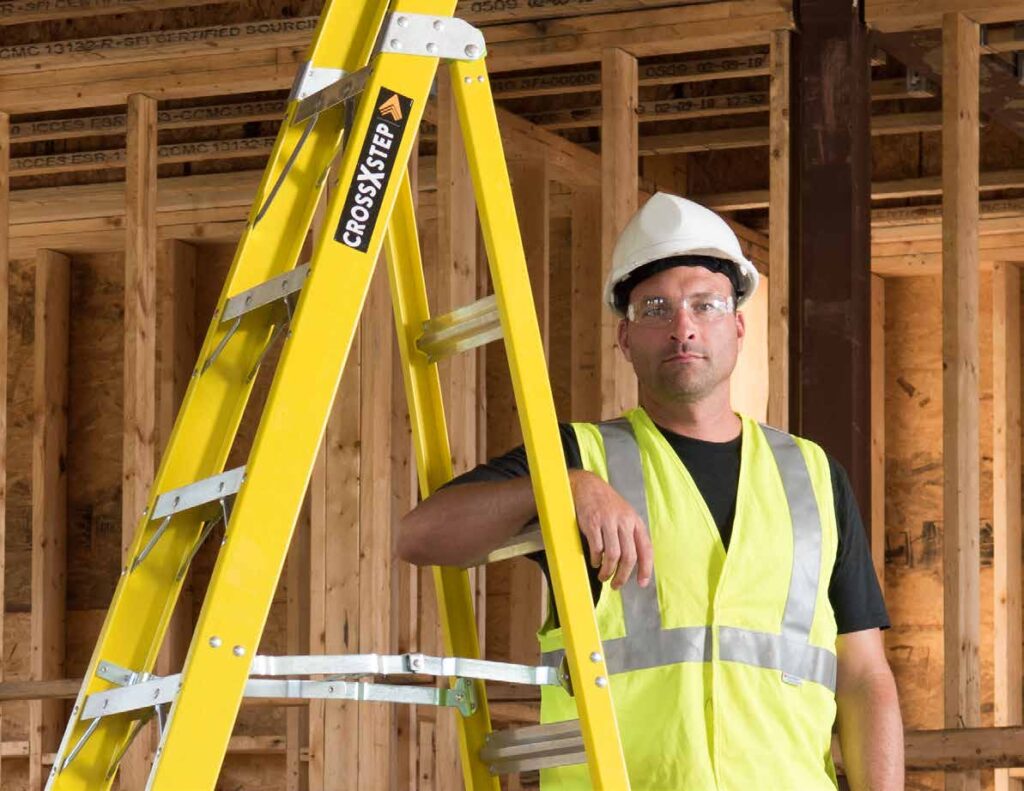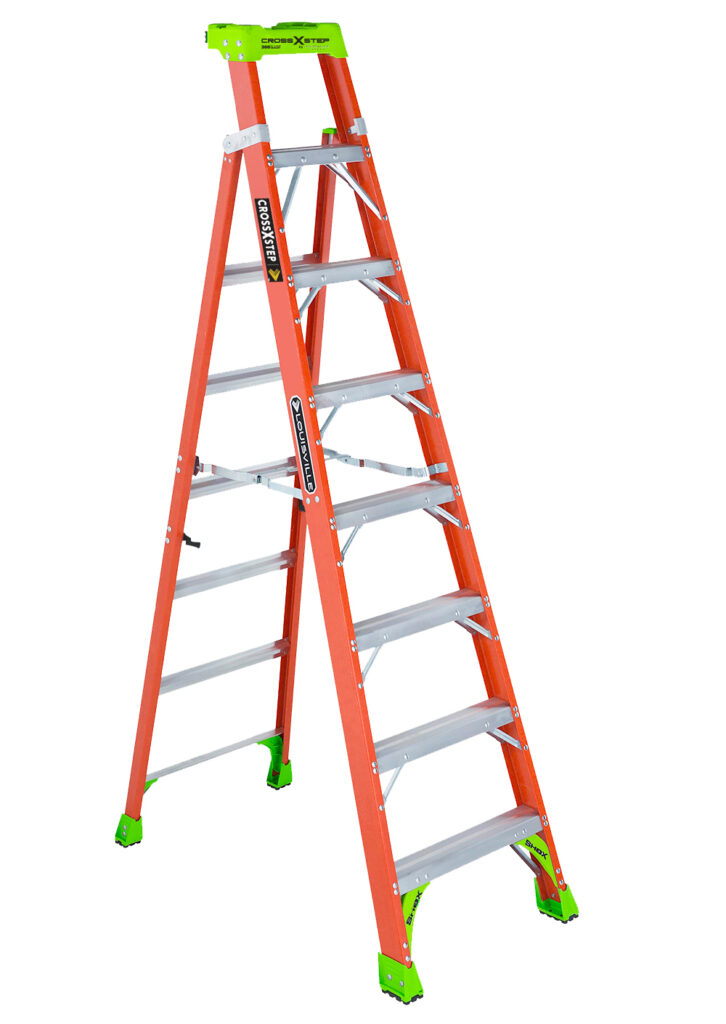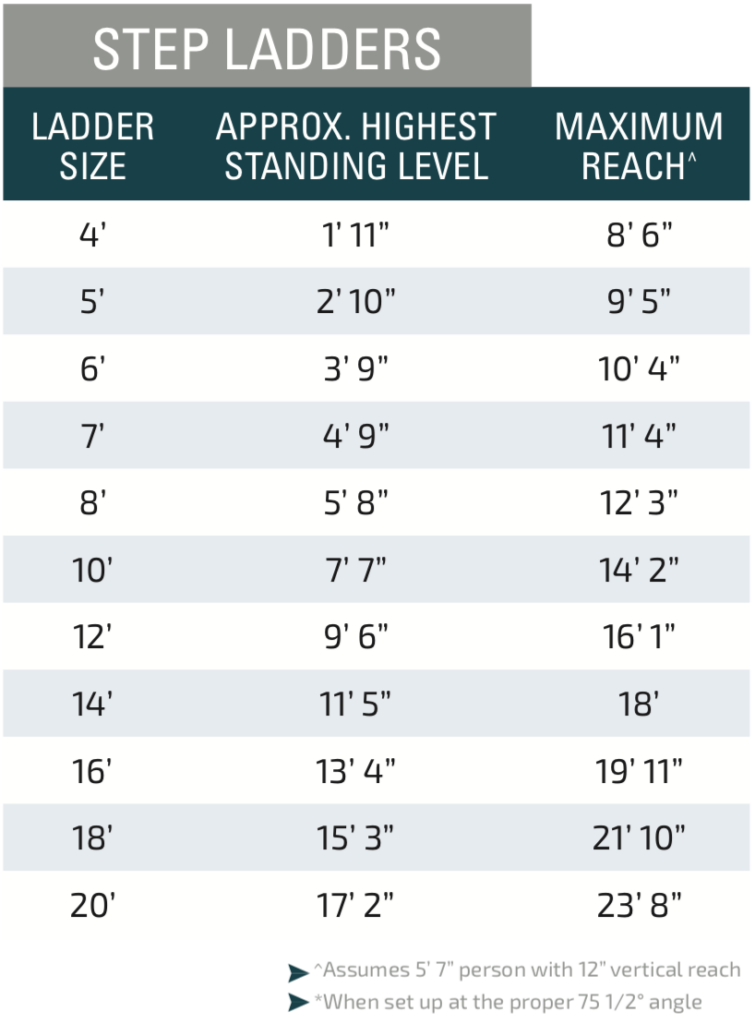No products in the cart.

Facebook
Twitter
Pinterest
LinkedIn
Email
4 THINGS TO KNOW ABOUT CHOOSING THE RIGHT LADDER
Most people, in and out of the trades, use some type of climbing device on a regular basis. For the homeowner it can be something as benign as a step stool to reach higher shelves, change a light bulb or even smoke detector batteries.
For the DIY’er, projects often include extended reaches. It can be as simple as ripping a panel (gee I wish my arms were longer) to building an elevated deck. Here, the need for different ladder types exists, depending on the work at hand.
For the pro, it’s a ladder collection of sorts. Step, extension and multi-purpose ladders are all needed. In some cases, scaffolds and pump jacks fit the bill. So here is a primer on the four criteria when selecting a ladder.
1: What type of ladder do I need?
This may seem like such a basic question, but different ladders are designed to safely guide you through different project types. Finding and selecting the right ladder is your first step (pun intended) to getting the right tool for the job.
Some basic types include step ladders, platform ladders, extension ladders and leaning step ladders (a must-have specialty item which saves pros on OSHA fines). The list can go on with specialty ladders such as attic ladders, step stools, rolling ladders as well as accessories that make your ladder do more.
First, let’s take a look at the 2 most common ladder types:

Step Ladders today do more than your grandfather’s wooden dinosaur did. If you’re old enough, you remember how rickety these were and, if you’re “lucky” enough, you’ve broken a rung while climbing. Life’s lessons indeed.
Today’s ladders are fixed length and allow for free-standing use for a variety of jobs. There are even versions that allow you to get closer to the work, double function as a leaning ladder (OSHA approved) and can even include a work platform for added security.
Extension Ladders allow you to store the tool more efficiently while also adding the flexibility of adjusting the height as needed. Other variations of this tool are straight, or manhole ladders, which are single section where a set length can be used over and over (think library ladders for a practical application of one-height needed).
Extension rung locks take the majority of the abuse on this ladder type and can contribute to early failure. Some companies are using advanced polymers to strengthen this key part. Polymers have replaced steel and aluminum in many applications today, including cars and trucks.
Less common types of ladders are:
Specialty ladders are often used with a particular purpose in mind. They’re not practical in many situations, like their extension and step ladder counterparts. A good example of these are the tripod ladders, most commonly used for picking and pruning, landscaping, tree surgery and other tough gardening jobs.
Another example of specialty ladders are the warehouse ladders: bigger, heavier and recommended for heavy use around the (you guessed it) warehouse. More specialized jobs require more specialized ladders, such as mobile platforms, rolling scaffolds, and trestle ladders.
You’ve probably familiar with attic ladders, either you have one at home, or have seen one at the movies. These are sturdy, light, foldable ladders that help make use of the attic space.


2: Choosing the right ladder reach/height
That’s right; there are two factors to consider when choosing the right ladder. How they’re calculated depends on the type of ladder that you are using.
Step ladders would include the length of the ladder when open as well as a maximum height you want to reach, calculated for an average person’s height of 5’9” with a vertical reach of 12”.
So if you know how high you want to reach, let’s say 10’, you would likely purchase a 6’ step ladder allowing you to safely stand almost 4’ above the ground.
Select a Height: Step ladder size, approximate highest standing level and maximum reach.
Extension ladders have a few other considerations. Here, the maximum working ladder length and highest standing level come in to play, based on the same physical characteristics of the individual described above.
Since there is a user defined angle of use on an extension ladder, an overlap of the sections and the projection of the ladder above the lean point, choosing the right product here is a bit more tricky.

3: Choosing the right weight capacity
Most home users don’t need a super heavy-duty ladder. Professionals, in contrast, need to make sure the ladder they use can support them and their tools. This is all easily solved by knowing what duty ratings actually are.
Duty rating is a category assigned to a ladder. It’s a way to easily tell how much total weight a ladder can support in each of its steps without any risks for the user. It’s written in Roman Numerals going from lighter loads to heavier ones. They start at III and go to I, then adding IA and IAA for even heavier loads.
Remember that these ratings include all of the weight the ladder can support. Some people make the mistake of going up a ladder because they’re under the allotted weight limit, not thinking about the heavy tools they’re carrying.
Here’s a duty ratings quick reference chart:

4: Choosing the right material
Louisville Ladders makes step and extension ladders with two main types of materials: aluminum and fiberglass. Both materials have advantages in disadvantages, depending on the type of job you have planned.
| Aluminum | Fiberglass |
| Lightweight | Strong and durable |
| Long-lasting construction | Weather-resistant |
| Resists corrosion | Great for heavy-duty construction |
| Ideal for painting, roofing and siding | Safe for working around electricity, provided they are clean and dry |
| They are not suited to use near electricity, as they are conductive and doing so may cause accidents. |
At the end of the day, choosing the right ladder starts with thinking what kind of job you’re going to be using it for. Then make sure you’ve taken all of the previous steps to ensure your product will not underperform, or, on the other hand, you’ll buy a ladder with features that you won’t ever be using or plain old overspending because of a lack of information.
If you have any further question, reach us out on our Facebook Page.
Get more building tips, safety ebooks, cool information and even discounts and promotions directly in your email inbox. JOIN OUR NEWSLETTER! We will NEVER spam you (we send about 1 email per month) and will NEVER share your information with anyone else.
EXPLORE THE PORTFOLIO Of LOUISVILLE LADDER
There’s only one name that drives industry standards in innovation and safety. There’s only one name whose quality expectations meet your own. There’s only one Louisville Ladder.
